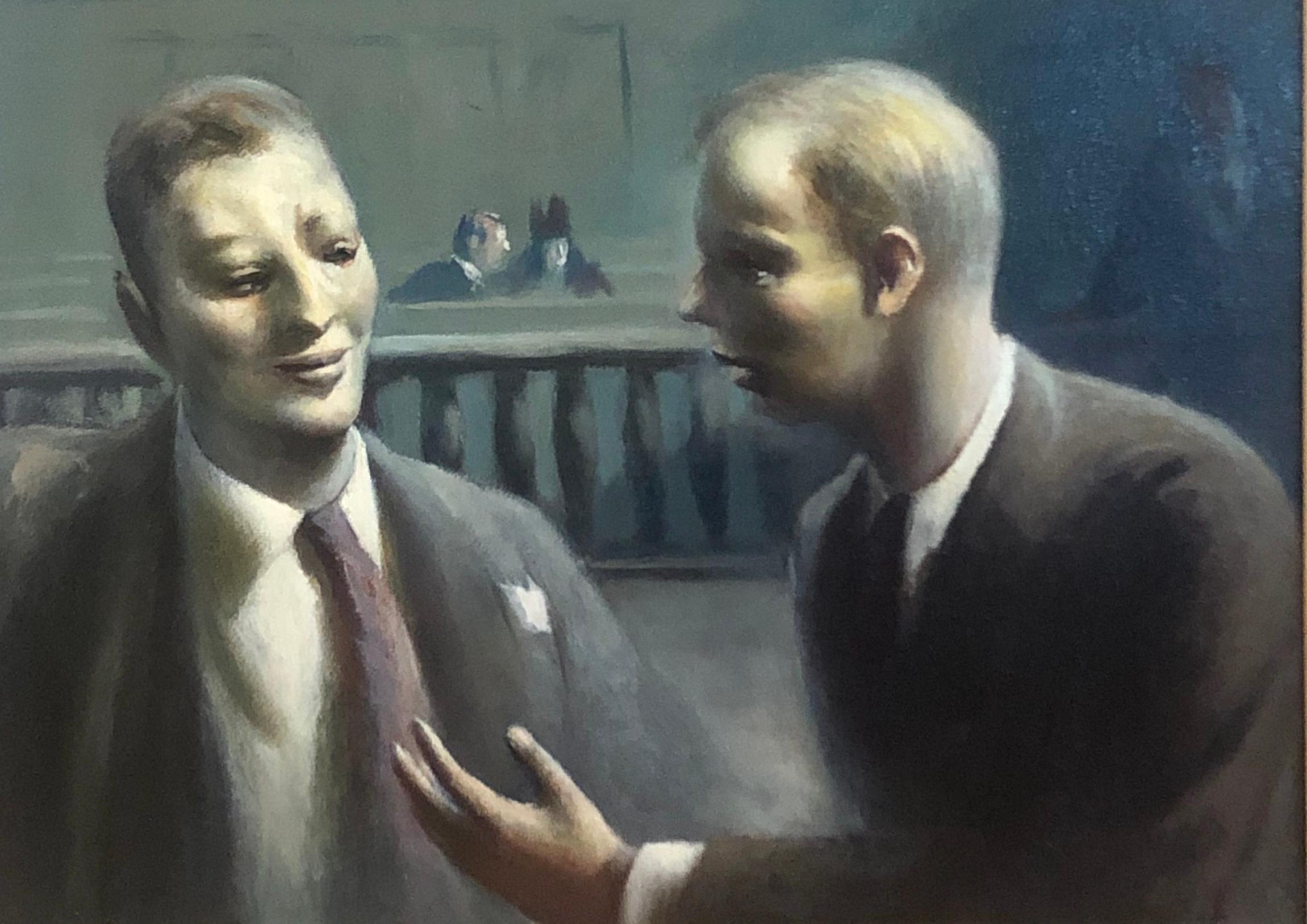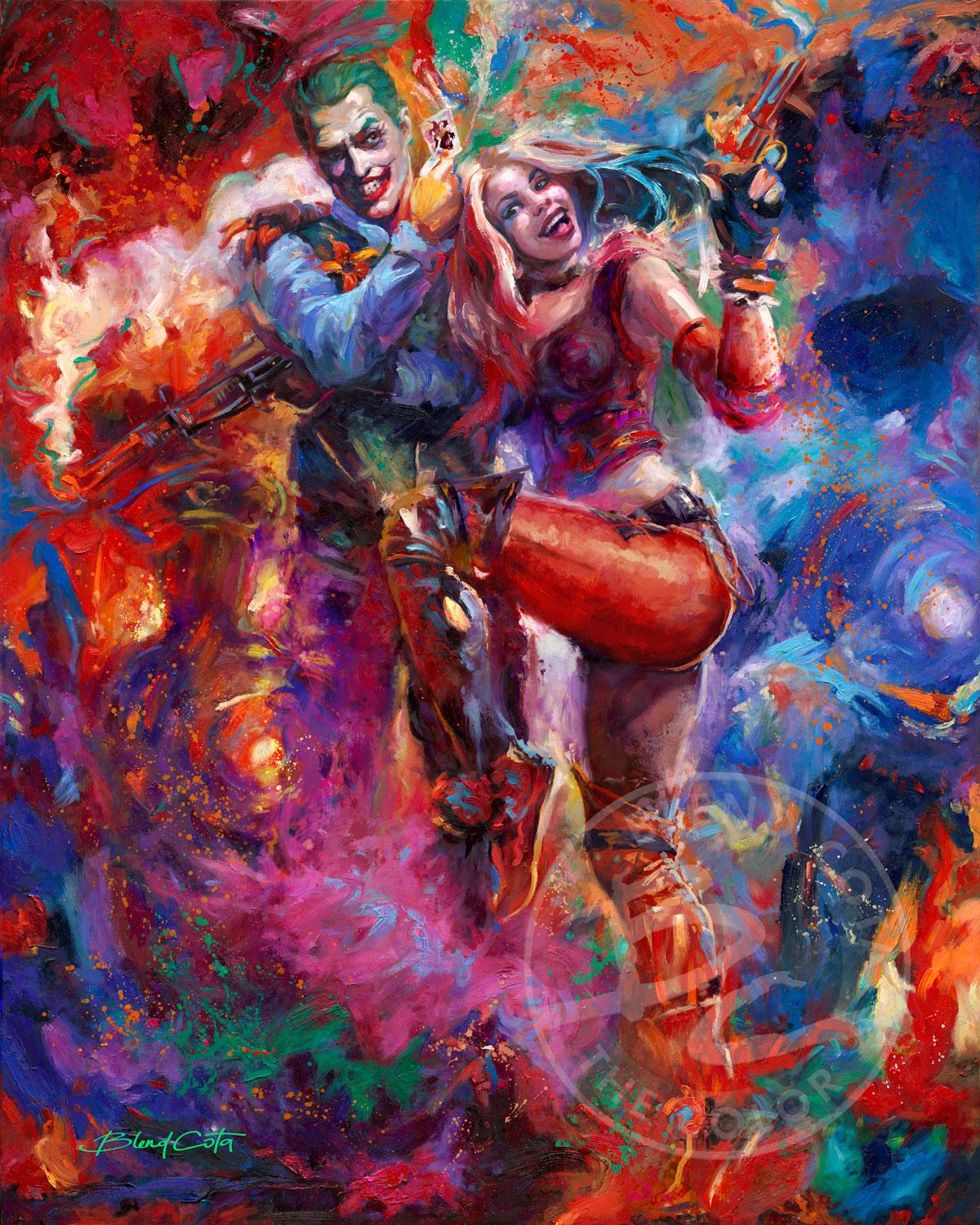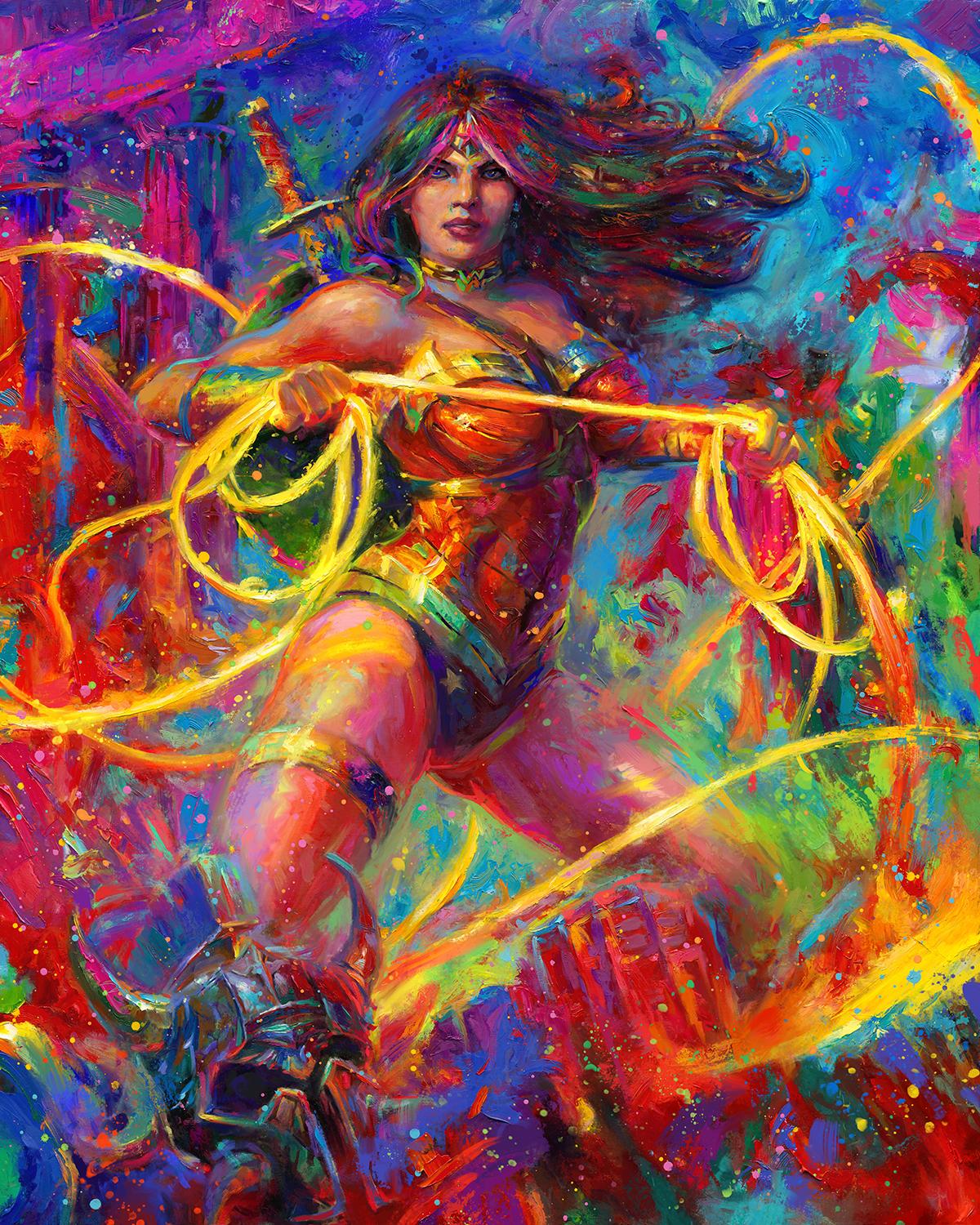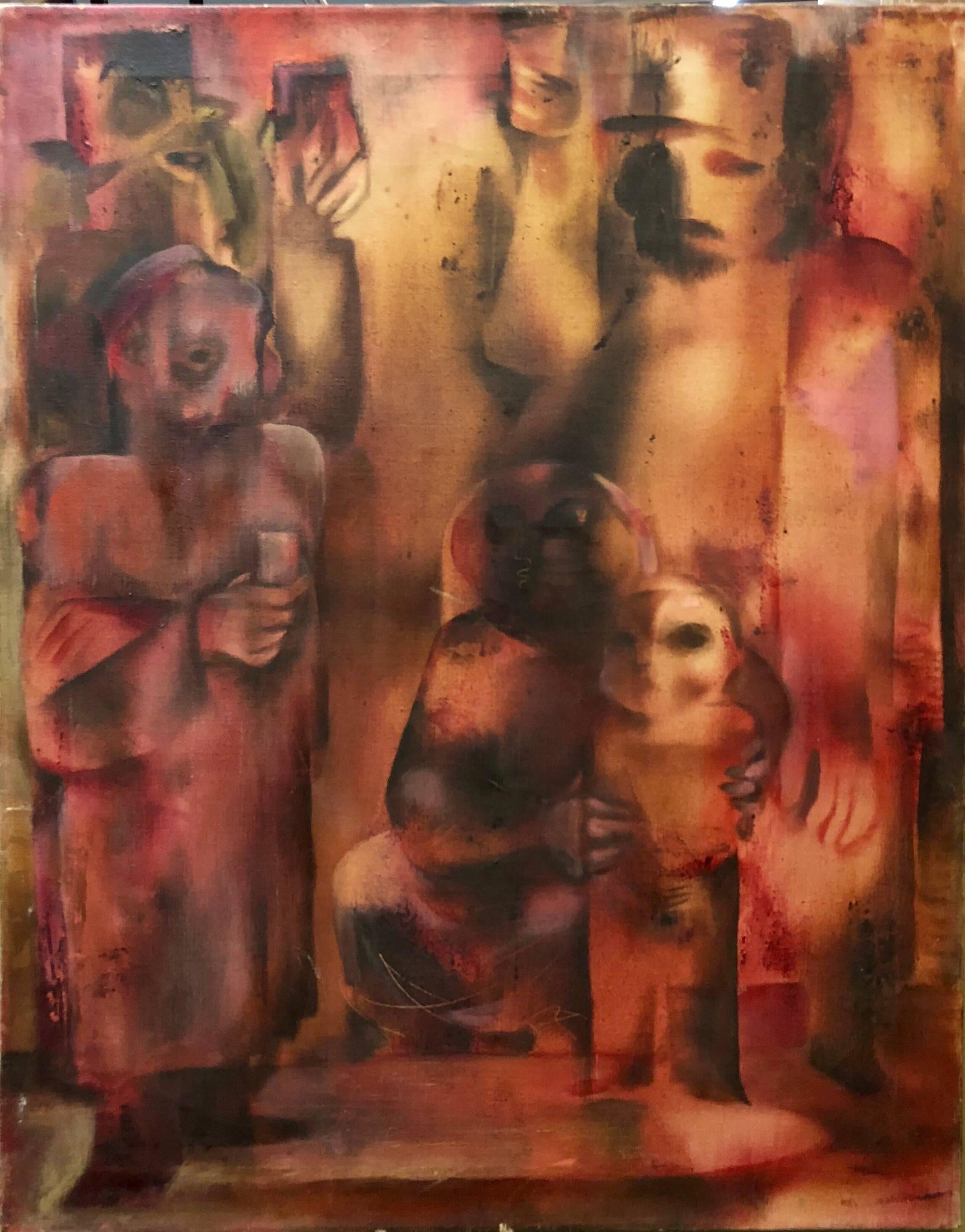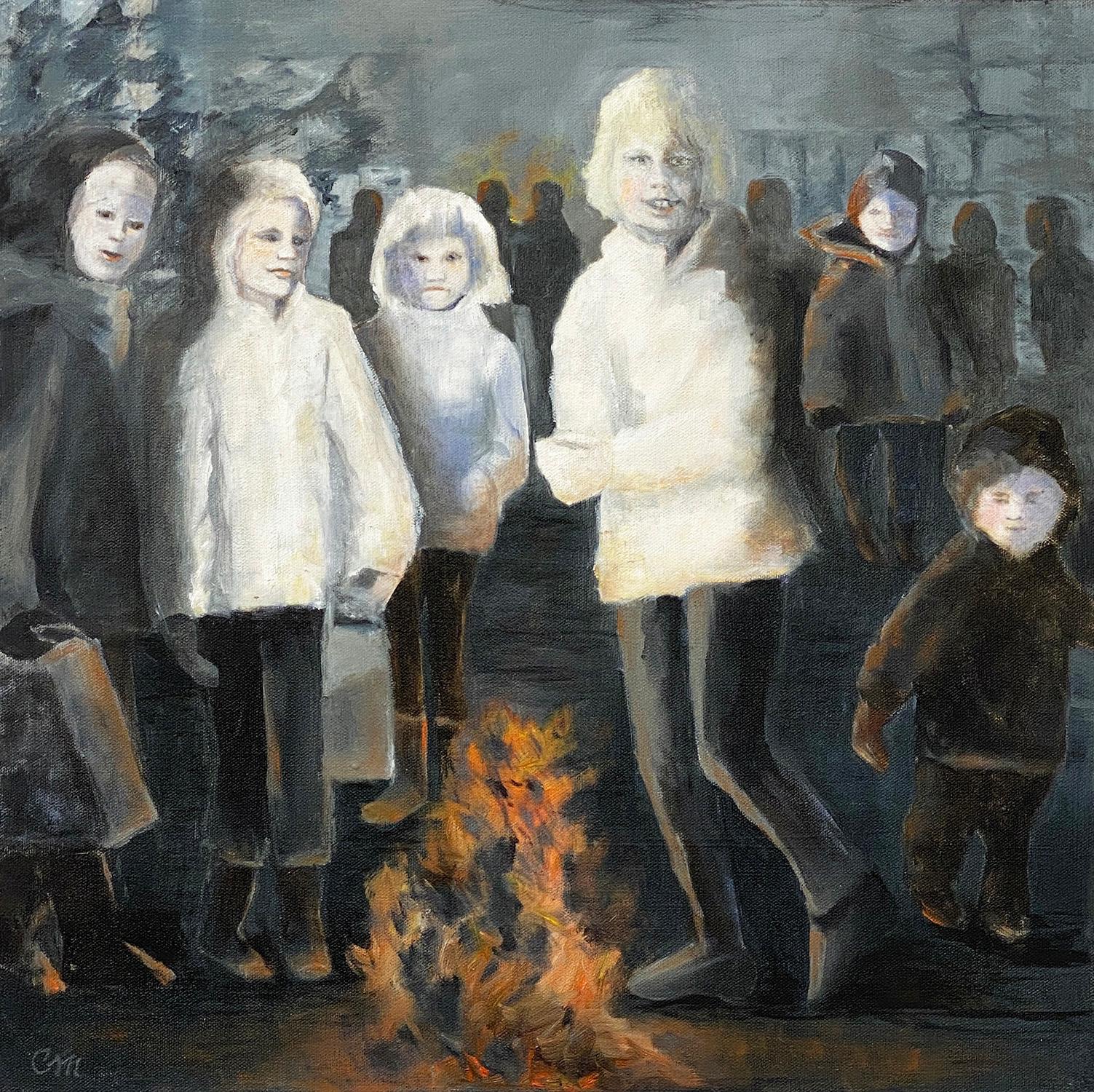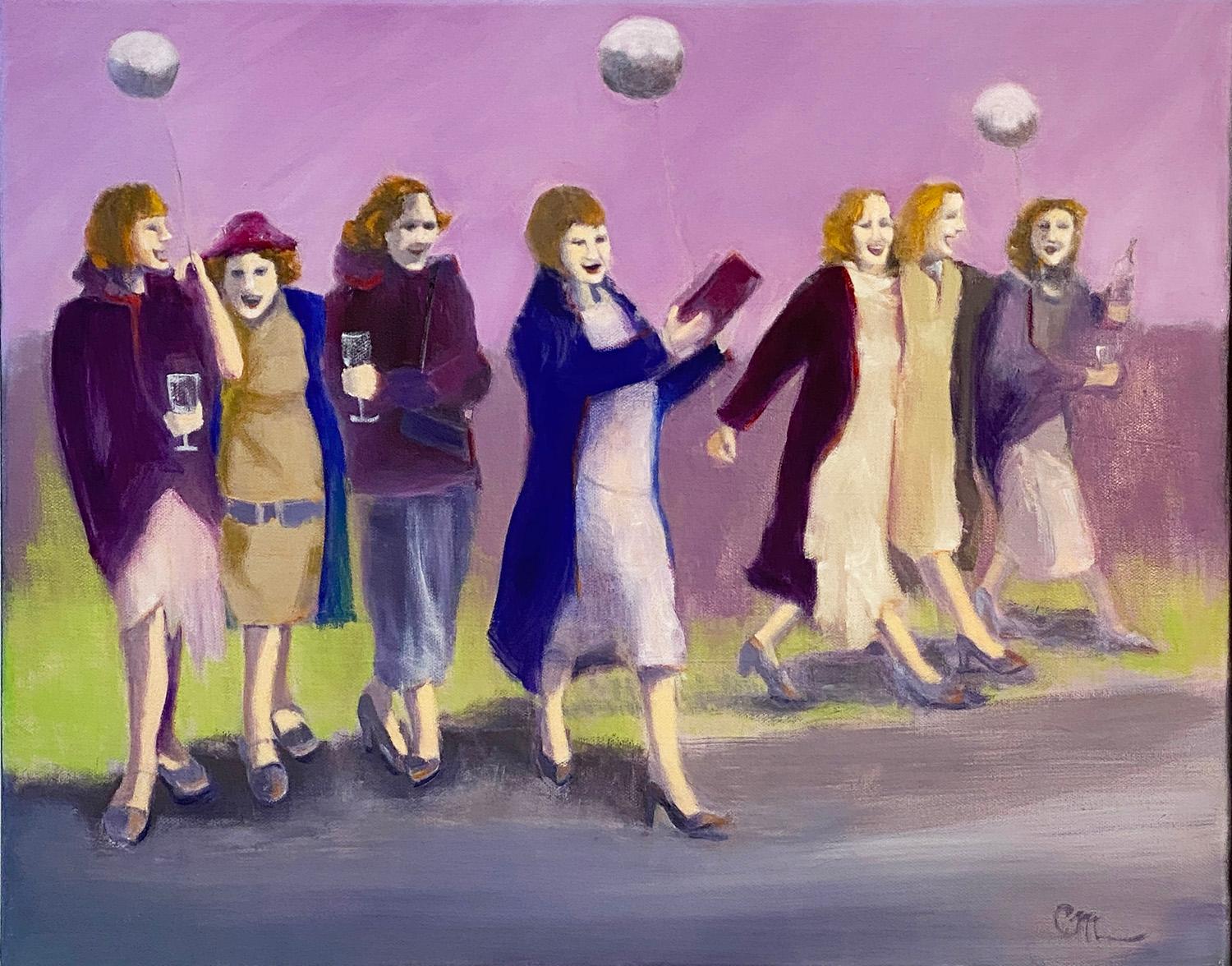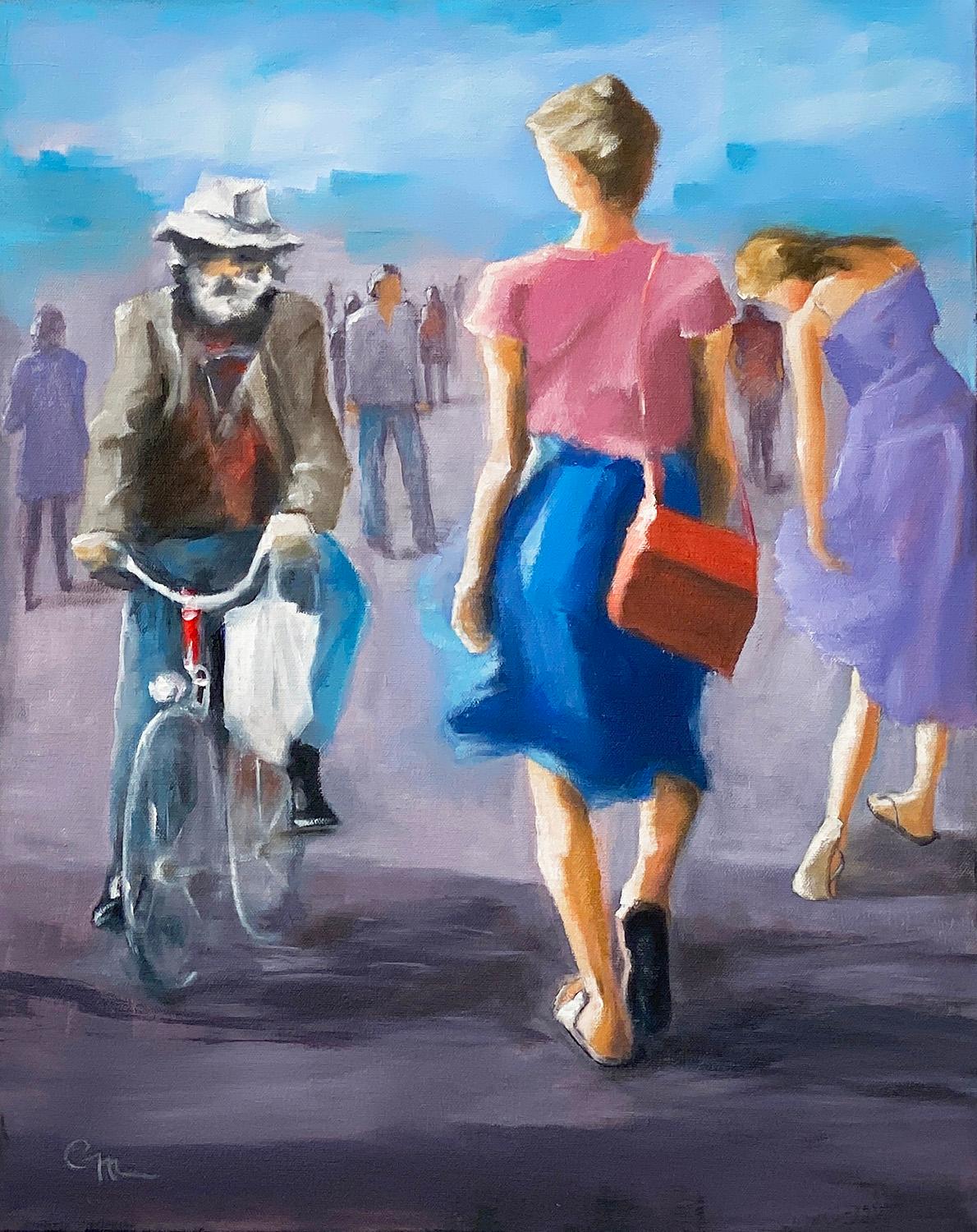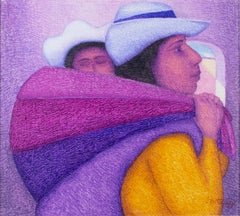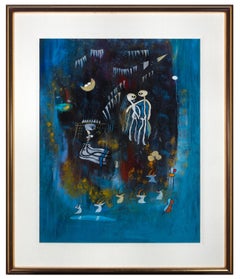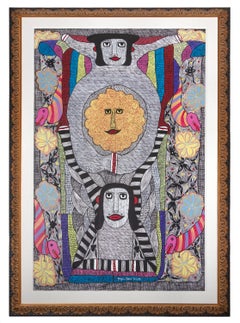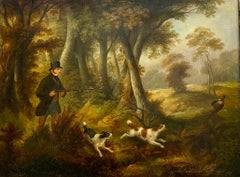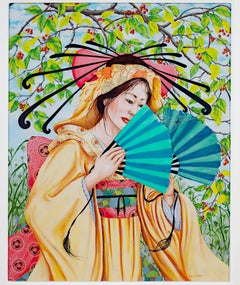
"Web of Dreams, " an Oil on Canvas signed by Karin Krohne Kaufman
View Similar Items
Want more images or videos?
Request additional images or videos from the seller
1 of 11
Karin Krohne Kaufman"Web of Dreams, " an Oil on Canvas signed by Karin Krohne Kaufman2006
2006
About the Item
- Creator:Karin Krohne Kaufman (American)
- Creation Year:2006
- Dimensions:Height: 39.75 in (100.97 cm)Width: 34 in (86.36 cm)
- Medium:
- Period:
- Condition:
- Gallery Location:Milwaukee, WI
- Reference Number:Seller: 11505c1stDibs: LU60532090993
About the Seller
4.9
Platinum Seller
These expertly vetted sellers are 1stDibs' most experienced sellers and are rated highest by our customers.
Established in 1966
1stDibs seller since 2017
388 sales on 1stDibs
Typical response time: 1 hour
More From This SellerView All
- "Madre Joven, " Oil Painting on Jute signed by Ernesto GutierrezBy Ernesto Gutierrez (b.1941)Located in Milwaukee, WI"Madre Joven" is an original oil painting on jute by Ernesto Gutierrez. The artist signed the piece lower right. It depicts a mother carrying her child on her back. 17" x 20" art 2...Category
Early 2000s Contemporary Figurative Paintings
MaterialsJute, Oil
- "Song for Lovers, " Symbolic Oil Painting on CanvasBy Xiao MingLocated in Milwaukee, WI"Song For Lovers" is an original oil painting on canvas by Xiao Ming. This artwork features two abstracted figures embracing, a seated figure with a dress, multiple animal heads, and other abstract symbols over a dark blue and black background. 23 3/4" x 19 1/2" art 31 1/2" x 26 1/2" frame Born in the Yunnan province of China, Close to Tibet, Xiao Ming found her artwork on her beliefs and traditions of living with nature as a guardian and protector. These beliefs and traditions may have influenced Ming to favor colored inks, a gouache of sorts derived from mineral pigments bound by using animal glue, Mings work is steeped in Chinese art history, influenced by the ancient scroll...Category
1990s Contemporary Figurative Paintings
MaterialsCanvas, Oil
- "Sun Totem, " haitian pattern god sun totem figurative optical signed by artistBy Prospere Pierre LouisLocated in Milwaukee, WI"Sun Totem" is an original acrylic painting on canvas signed and dated lower center by the artist Prospere Pierre Louis. It depicts a few contorted human figures in a totem pole arra...Category
1990s Figurative Paintings
MaterialsCanvas, Oil
- "Feria de Sombreros (The Hat Market), " an Oil signed by Ernesto GutierrezBy Ernesto Gutierrez (b.1941)Located in Milwaukee, WI"Feria de Sombreros (The Hat Market)" is an original oil painting on jute signed in the lower right by the artist Ernesto Gutierrez. It depicts multiple figures in purple shawls and ...Category
Early 2000s Figurative Paintings
MaterialsJute, Oil
- "La Familia, " Oil Painting on Jute signed by Ernesto GutierrezBy Ernesto Gutierrez (b.1941)Located in Milwaukee, WI"La Familia" (The Family) is an original oil painting on jute by Ernesto Gutierrez. The artist signed the piece in the lower right. It depicts a family of people walking through a de...Category
Early 2000s Contemporary Figurative Paintings
MaterialsJute, Oil
- 'Sketching Wisconsin' original oil painting, SignedBy John Steuart CurryLocated in Milwaukee, WIJohn Steuart Curry "Sketching Wisconsin," 1946 oil on canvas 31.13 x 28 inches, canvas 39.75 x 36.75 x 2.5 inches, frame Signed and dated lower right Overall excellent condition Presented in a 24-karat gold leaf hand-carved wood frame John Steuart Curry (1897-1946) was an American regionalist painter active during the Great Depression and into World War II. He was born in Kansas on his family’s farm but went on to study art in Chicago, Paris and New York as young man. In Paris, he was exposed to the work of masters such as Peter Paul Rubens, Eugène Delacroix and Jacques-Louis David. As he matured, his work showed the influence of these masters, especially in his compositional decisions. Like the two other Midwestern regionalist artists that are most often grouped with him, Grant Wood (American, 1891-1942) and Thomas Hart Benton (American, 1889-1975), Curry was interested in representational works containing distinctly American subject matter. This was contrary to the popular art at the time, which was moving closer and closer to abstraction and individual expression. Sketching Wisconsin is an oil painting completed in 1946, the last year of John Steuart Curry’s life, during which time he was the artist-in-residence at the University of Wisconsin in Madison. The painting is significant in Curry’s body of work both as a very revealing self-portrait, and as a landscape that clearly and sensitively depicts the scenery of southern Wisconsin near Madison. It is also a portrait of the artist’s second wife, Kathleen Gould Curry, and is unique in that it contains a ‘picture within a picture,’ a compositional element that many early painting masters used to draw the eye of the viewer. This particular artwork adds a new twist to this theme: Curry’s wife is creating essentially the same painting the viewer is looking at when viewing Sketching Wisconsin. The triangular composition of the figures in the foreground immediately brings focus to a younger Curry, whose head penetrates the horizon line and whose gaze looks out towards the viewer. The eye then moves down to Mrs. Curry, who, seated on a folding stool and with her hand raised to paint the canvas on the easel before her, anchors the triangular composition. The shape is repeated in the legs of the stool and the easel. Behind the two figures, stripes of furrowed fields fall away gently down the hillside to a farmstead and small lake below. Beyond the lake, patches of field and forest rise and fall into the distance, and eventually give way to blue hills. Here, Curry has subverted the traditional artist’s self-portrait by portraying himself as a farmer first and an artist second. He rejects what he sees as an elitist art world of the East Coast and Europe. In this self-portrait he depicts himself without any pretense or the instruments of his profession and with a red tractor standing in the field behind him as if he was taking a break from the field work. Here, Curry’s wife symbolizes John Steuart Curry’s identity as an artist. Compared with a self-portrait of the artist completed a decade earlier, this work shows a marked departure from how the artist previously presented and viewed himself. In the earlier portrait, Curry depicted himself in the studio with brushes in hand, and with some of his more recognizable and successful canvases behind him. But in Sketching Wisconsin, Curry has taken himself out of the studio and into the field, indicating a shift in the artist’s self-conception. Sketching Wisconsin’s rural subject also expresses Curry’s populist ideals, that art could be relevant to anyone. This followed the broad educational objectives of UW’s artist-in-residence program. Curry was appointed to his position at the University of Wisconsin in 1937 and was the first person to hold any such position in the country, the purpose of which was to serve as an educational resource to the people of the state. He embraced his role at the University with zeal and not only opened the doors of his campus studio in the School of Agriculture to the community, but also spent a great deal of time traveling around the state of Wisconsin to visit rural artists who could benefit from his expertise. It was during his ten years in the program that Curry was able to put into practice his belief that art should be meaningful to the rural populace. However, during this time he also struggled with public criticism, as the dominant forces of the art market were moving away from representation. Perhaps it was Curry’s desire for public acceptance during the latter part of his career that caused him to portray himself as an Everyman in Sketching Wisconsin. Beyond its importance as a portrait of the artist, Sketching Wisconsin is also a detailed and sensitive landscape that shows us Curry’s deep personal connection to his environment. The landscape here can be compared to Wisconsin Landscape of 1938-39 (the Metropolitan Museum of Art), which presents a similar tableau of rolling hills with a patchwork of fields. Like Wisconsin Landscape, this is an incredibly detailed and expressive depiction of a place close to the artist’s heart. This expressive landscape is certainly the result of many hours spent sketching people, animals, weather conditions and topography of Wisconsin as Curry traveled around the state. The backdrop of undulating hills and the sweeping horizon, and the emotions evoked by it, are emphatically recognizable as the ‘driftless’ area of south-central Wisconsin. But while the Metropolitan’s Wisconsin Landscape conveys a sense of uncertainty or foreboding with its dramatic spring cloudscape and alternating bands of light and dark, Sketching Wisconsin has a warm and reflective mood. The colors of the foliage indicate that it is late summer and Curry seems to look out at the viewer approvingly, as if satisfied with the fertile ground surrounding him. The landscape in Sketching Wisconsin is also revealing of what became one of Curry’s passions while artist-in-residence at UW’s School of Agriculture – soil conservation. When Curry was a child in Kansas, he saw his father almost lose his farm and its soil to the erosion of The Dust Bowl. Therefore, he was very enthusiastic about ideas from UW’s School of Agriculture on soil conservation methods being used on Wisconsin farms. In Sketching Wisconsin, we see evidence of crop rotation methods in the terraced stripes of fields leading down the hillside away from the Curry’s and in how they alternate between cultivated and fallow fields. Overall, Sketching Wisconsin has a warm, reflective, and comfortably pastoral atmosphere, and the perceived shift in Curry’s self-image that is evident in the portrait is a positive one. After his rise to favor in the art world in the 1930’s, and then rejection from it due to the strong beliefs presented in his art, Curry is satisfied and proud to be farmer in this self-portrait. Curry suffered from high blood...Category
1940s American Realist Figurative Paintings
MaterialsCanvas, Oil
You May Also Like
- Heavenly PerformersLocated in Austin, TXArtist Unknown Medium: Oil on Canvas Dimensions: 16" x 13" (canvas) 22" x 19" (frame) FramedCategory
18th Century Figurative Paintings
MaterialsCanvas, Oil
Price Upon Request - PHEASANT SHOOTINGBy Samuel John Egbert JonesLocated in Marlborough, GBSamuel John Egbert Jones (1797- 1861) PHEASANT SHOOTING Oil on canvas Frame H. 38cm x W. 47cm Image H. 30cm x W. 40cm A hunting scene in a beautiful early autumnal wooded landscap...Category
1840s Figurative Paintings
MaterialsOil
- Guy Pene du Bois WPA American Modernism Realism NYC Scene Oil Lawyers in CourtBy Guy Pène Du BoisLocated in New York, NYGuy Pene du Bois' "Two Figures in Courtroom" is a WPA era American scene oil painting created in a realistic style. Modernism at its best The work is framed by Heydenryk. Pène du Bois descended from French immigrants who settled in Louisiana in 1738 and was raised in a Creole household. He was born in 1884 in Brooklyn, NY and first studied with William Merritt Chase at the New York School of Art and later continued his training with Robert Henri. Pène du Bois was greatly impressed with Henri's credo that "real life" was subject matter for art and throughout his life a realist philosophy informed his art as well as his parallel career, art criticism. In 1905, Pène du Bois made his first visit to Paris where he painted scenes of fashionable people in cafes rendered in the dark tonalities and impasto associated with the Ashcan School. By 1920, he had achieved his mature style, which was characterized by stylized, rounded, almost sculptural figures painted with invisible brushstrokes. The subjects of his paintings were often members of society whom he gently satirized. In 1924, Pène du Bois and his wife, Floy, left for France where they would remain until 1930. Returning to America showcases pictures the artist produced after this very productive period abroad. After five years of living in France, Pène du Bois was able to observe American life with fresh eyes. His work becomes more psychologically intense and less satirical. In Girl at Table a slender, blond is shown gazing at a small statue that she holds at arm's distance. The meaning is elusive, but a powerful sense of longing is evoked. Similarly, paintings such as Dramatic Moment and Jane are taut with unresolved dialogue. Both pictures depict mysterious interiors in which a lone woman anxiously awaits the denouement of a suspenseful scene. Other pictures, for example, Chess Tables, Washington Square and Bar, New Orleans, recall Pene du Bois's Ashcan origins in their depiction of urban entertainment. During this period, landscape becomes an important subject for Pène du Bois. Girl Sketching...Category
1930s American Modern Figurative Paintings
MaterialsPaper, Oil, Board
- Joker and Harley - oil on canvas painting by Blend CotaBy Blend CotaLocated in Montreal, QuebecArtist Notes: There is never a dull moment with this pair of predators out on a sinister prowl. Look at their eccentric fashion and the blend of color splashes, that celebrate the cr...Category
2010s Figurative Paintings
MaterialsOil
- Wonder Women Champion of Themyscira by Blend Cota 2018By Blend CotaLocated in Montreal, QuebecThis licensed Blend Cota oil on canvas painting of Wonder Women - Champion of Themyscria - oil on Canvas is brought to life utilizing Blend's own famous col...Category
2010s Abstract Figurative Paintings
MaterialsCanvas, Oil
- Ballerina - oil on canvas painting by Blend Cota 2018 - 38"x60"By Blend CotaLocated in Montreal, QuebecThis licensed Blend Cota oil on canvas painting of Ballerina is brought to life utilizing Blend's now famous colorism technique. This painting captures what...Category
2010s Abstract Figurative Paintings
MaterialsOil
Recently Viewed
View AllMore Ways To Browse
Two Fans
Webber Painting
Blue Fan
Childrens Book Illustration
Children Book Illustrations
Oil On Canvas Asian Framed
30s Illustration
Illustration 30s
Childrens Book Illustration Original
Spider Painting
Spinning Oil
Oil Painting Asian Woman
Carl Jung
Wpa Work
Bordeaux Art
Fish Fine Art
Paintings Of Ladies
Painting Of Young Boy

